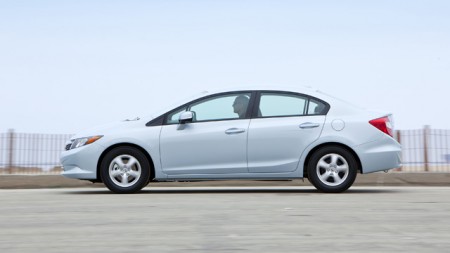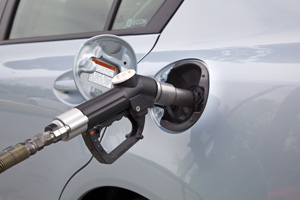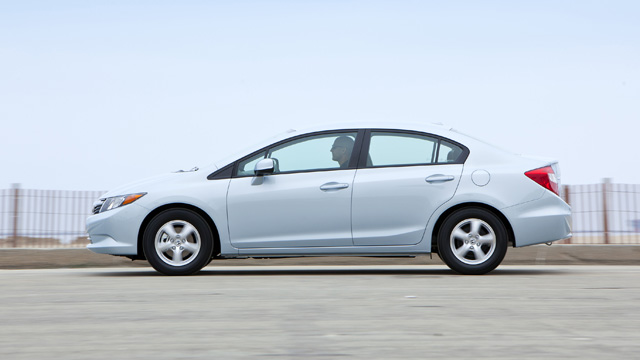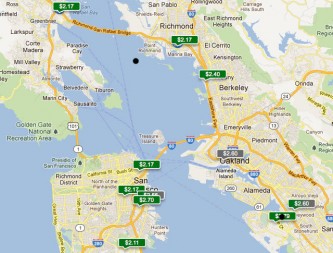
Last July, the State of California told 85,000 hybrid car owners they could no longer drive solo in carpool lanes. That perk was designed to spur sales of clean-burning cars. The end of the incentive for hybrids sent thousands of long-distance solo commuters looking for an even greener car that would be eligible to stay in the diamond lane. The 2012 Honda Civic Natural Gas is one option, the only new car in the U.S. market that runs on CNG. It's eligible for a white HOV (High-Occupancy Vehicle) lane decal—granted only to cars that run on compressed natural gas or purely on electricity. But adoption of CNG cars is only slightly increasing.
Benefits of CNG
Like an EV, the cost of fueling a CNG car is less than half that of a gas-powered vehicle. CNG-driving commuters also enjoy a 50 percent discount for tolls on Bay Area bridges during commute times. While most all-electric cars are limited to about 80 reliable miles of range, the Honda Civic Natural Gas goes about 220 miles on a full tank of pressurized gaseous fuel.
“Our sales of the Civic CNG have more than doubled so far this year,” said Chris Rigalia, sales manager at Berkeley Honda, but the dealership only sold about a dozen of the cars throughout 2011. Now, Rigalia can’t get enough of Civic Natural Gas cars to meet demand. Berkeley Honda has already sold about 20 units so far this year and predicts selling another 20 before the end of 2012. This mismatch of supply and demand means that Berkeley Honda is charging a $1,000 to $2,000 premium over the $26,125 suggested retail price.

Honda Motor Co. is aware of increased interest. “We just closed our best first quarter ever for CNG sales, just shy of 450 units,” said Eric Rosenberg, who is responsible for Honda’s national marketing of the Civic Natural Gas. Yet, Rosenberg said the company needs a few more months of sales before deciding to expand production.

